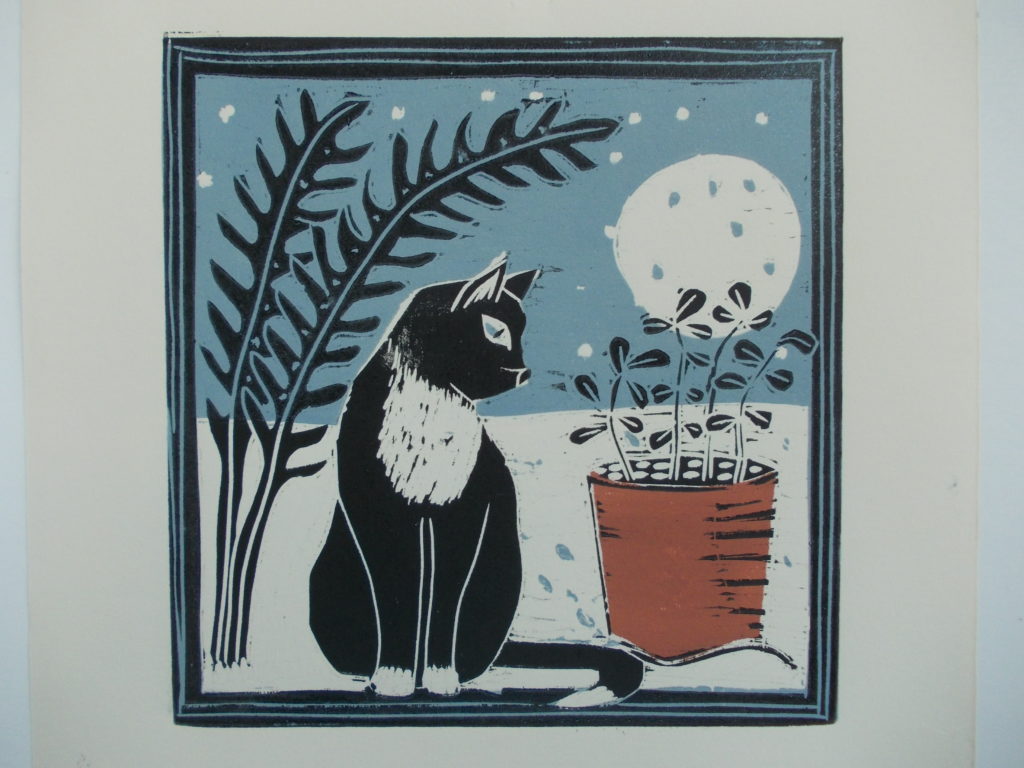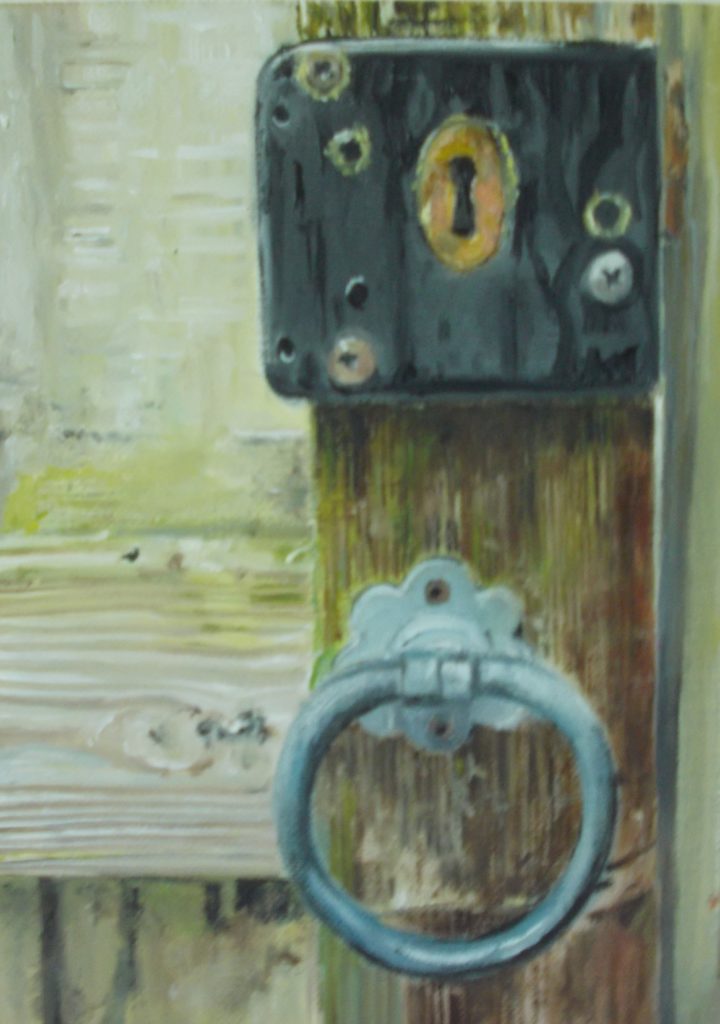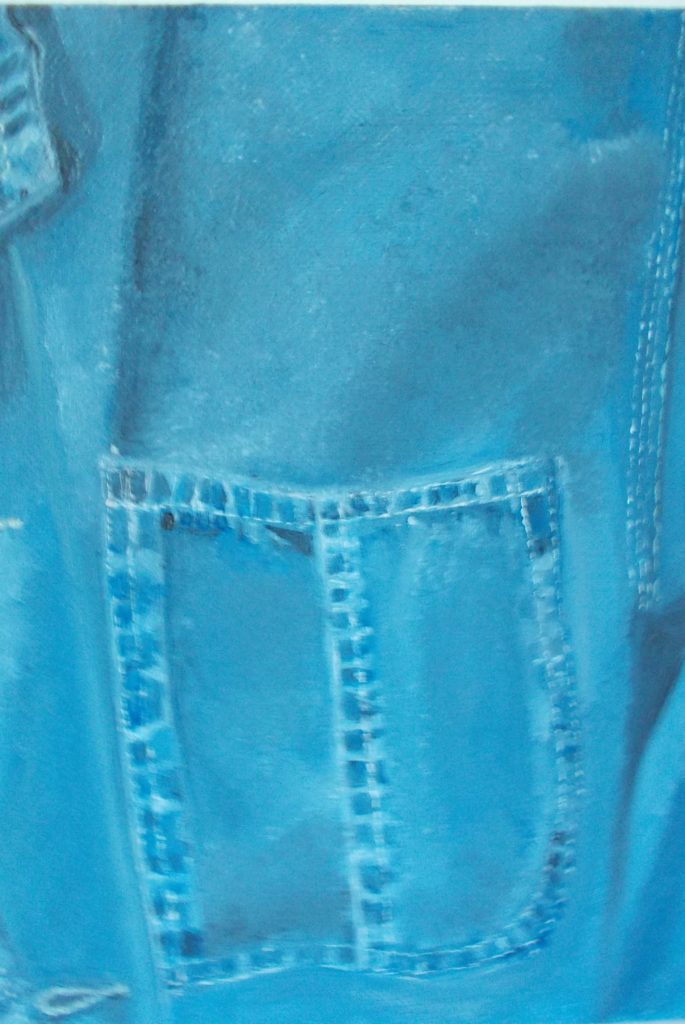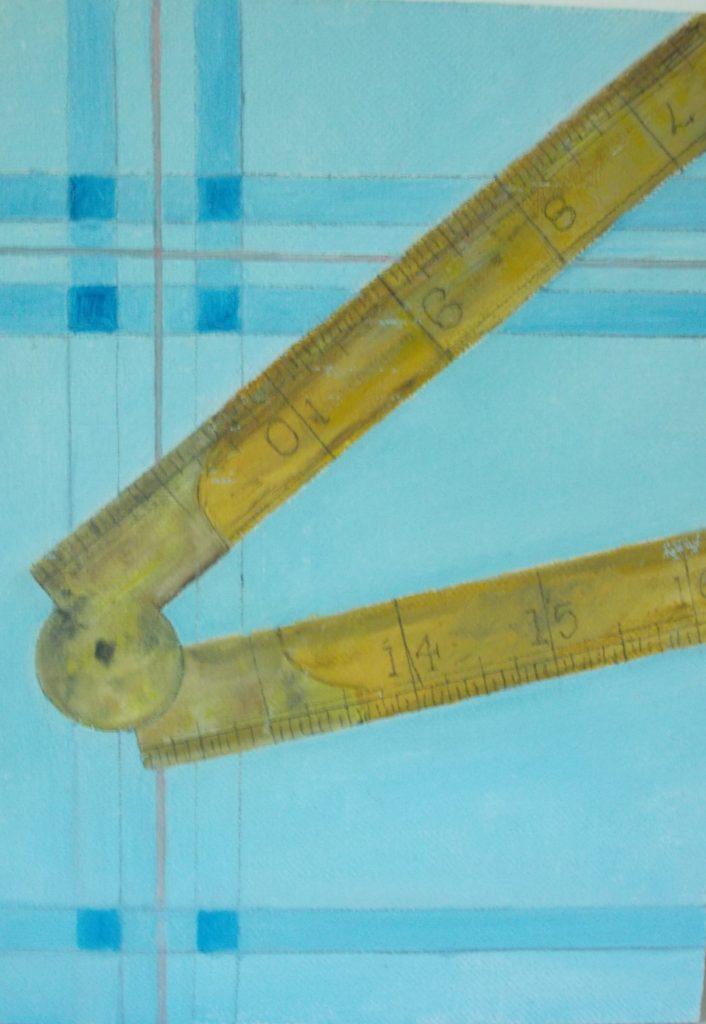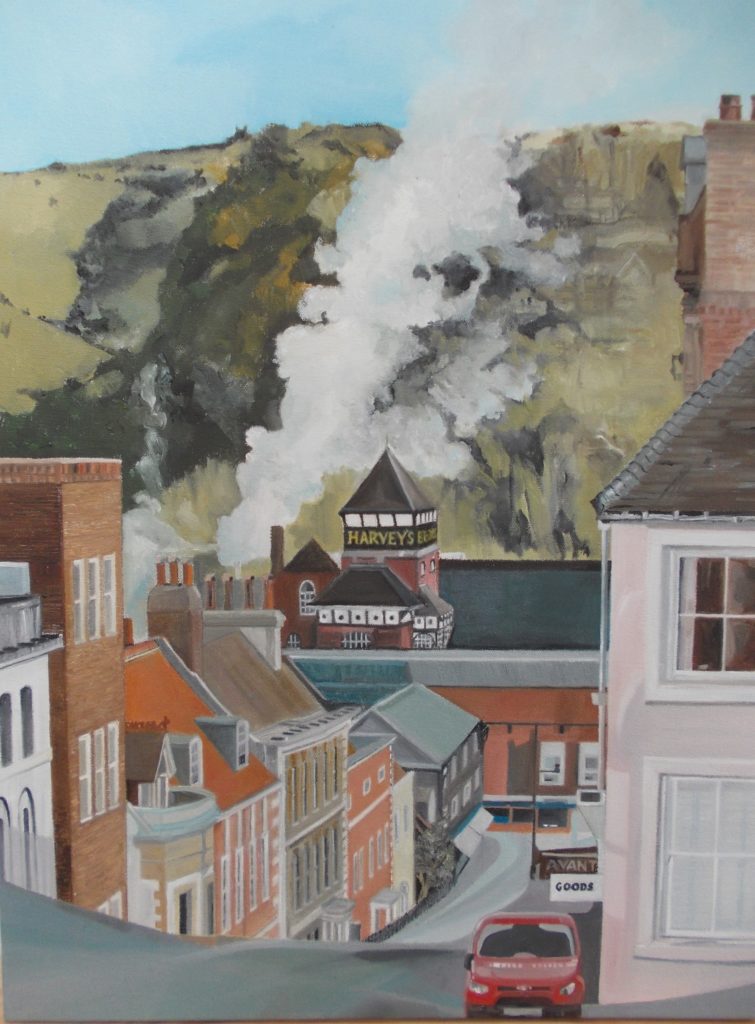Liz: In January I received a kidney transplant after 3 years on dialysis. This was wonderful news, but has for four and more months involved many unanticipated side-effects, a cupboard full of medication and a routine of hospital visits up to three times a week. My art and craft work was not surprisingly suspended. However, in late April and into May, I was able to return to my lino printing class in Lewes. Returning to favourites I have been able to do versions of a Winter picture showing a cat in the snow and a Spring picture of a blackbird with foliage.
Peter: January to late April was, as Liz explains, a fallow period for us both. I barely visited the Workshop (it was also very cold) but did do some small paintings at a desk at the top of the house, chiefly of ordinary everyday objects. These are pictures of things which we tend to take for granted but which might take on some interest, whether in their structure, colour, texture or surface when we look again
There are now some 20 of these pictures (oil on 18x13cm canvasses on board. See ‘Recent Work’). I‘m thinking of combining them in one composite 4 x5 set: a sort of in praise of ordinariness. Maybe, maybe not.
At the back of my mind, as so often, anyway, is the phrase ‘So much depends upon’ from a favourite and famous short poem by the American poet William Carlos Williams, a friend and co-worker of the painters Charles Sheeler and Charles Demuth who I mention elsewhere on this site. The poem runs:
So much depends
upon
a red wheel
barrow
glazed with rain
water
beside the white chickens.
The poem has been much discussed but for my purposes it’s a poem about a startling, illuminating moment when an ordinary, humdrum object and scene take on a special uplifting quality, in a kind of waking moment. All I need for this series to find is a red wheelbarrow glistening in the rain!
Other work by me just before and just after this fallow period for us both, are paintings of the remains of the West Pier at Brighton, a planned picture at a distance of the existing pier, a painting of Harvey’s Brewery in Lewes from the top of School Hill and one of the signal box at Lewes Station. Each picture is a re-working of striking photographs by family members and a friend. This has become a standard practice for me and I may try something more directly abstract just to see how satisfying, or not, I would find this. I’ve become very conscious of – what seems like – the coarse surface of the standard canvas I’ve been using and am trying linen canvas or may return to board.
When not painting or wondering how to paint in this same period I’ve been reading a number of books on painting: three by John Berger (Landscapes, Portraits and Confabulations), Grayson Perry’s Playing to the Gallery, Julian Bell’s What is Painting? Most are critical works on the practice and theory or philosophies of painting or drawing, over time in Berger’s Portraits and Bell’s book, as well as in Perry’s book on the cultural institutions governing taste, judgement, value (in money terms) and fame. Bell’s book is particularly careful and impressive in tracking artistic practice in relation to other cultural and critical theory (for example postmodernism and deconstruction). It is perhaps the most scholarly of these books. Perry’s is the most iconoclastic, and Berger’s the most searching and intensely felt in his reflections on art practice and most radical in his lasting adherence to a very direct and uncompromised Marxism.
I’m not sure what I’ve learned from these author/artists to advance my own taste and practice. I think maybe I was looking for some vindication of what I’ve been doing and feel drawn to in the artists I admire. They’re all open enough to allow for that (none, that is to say, are dictatorial or feel there is one way especially today for art to go).
So, carry on …
